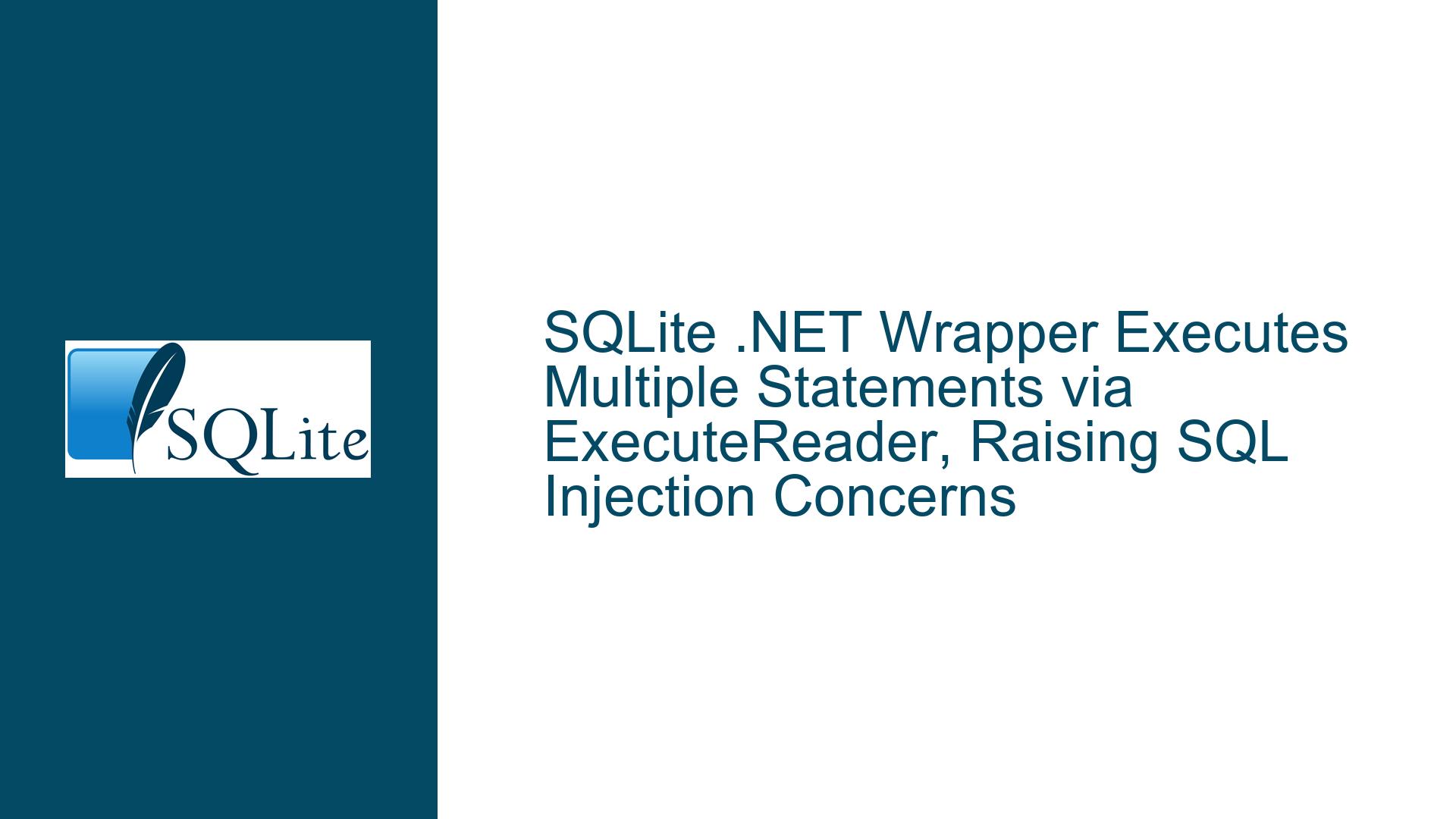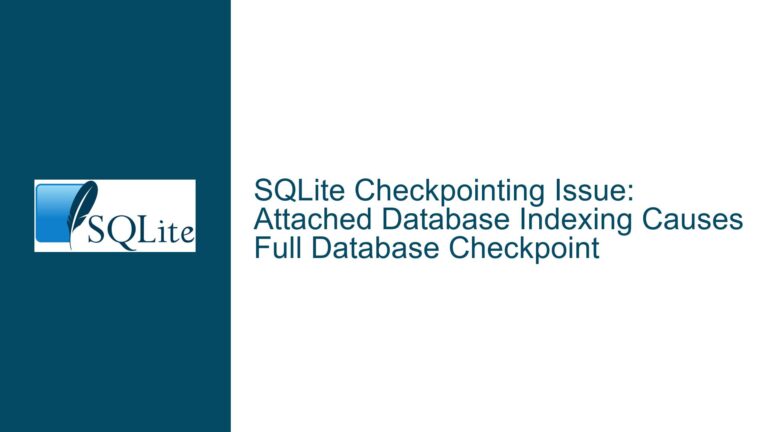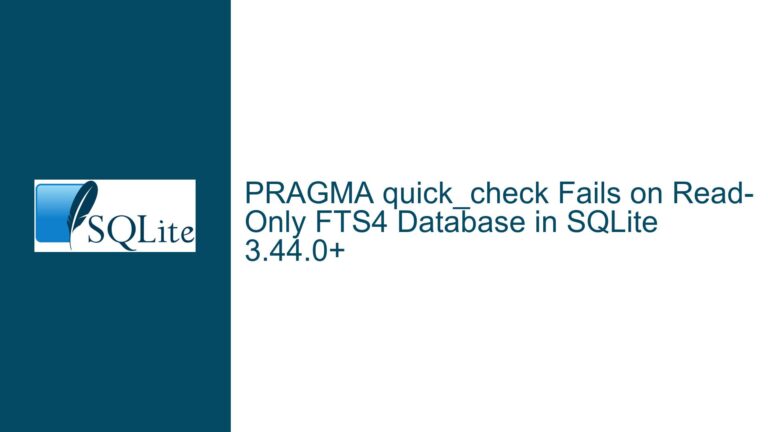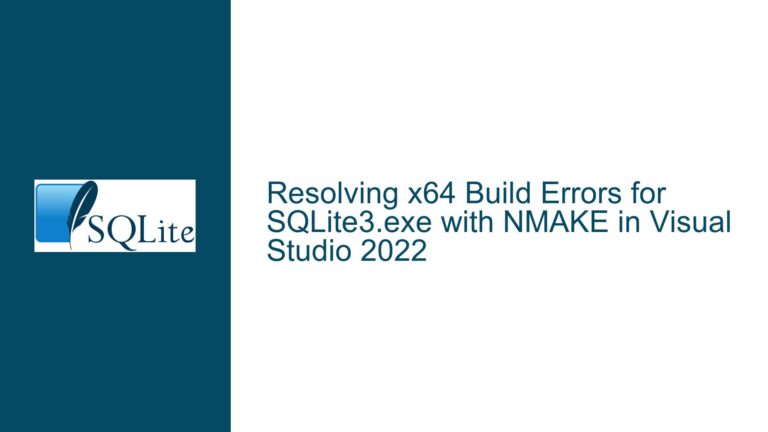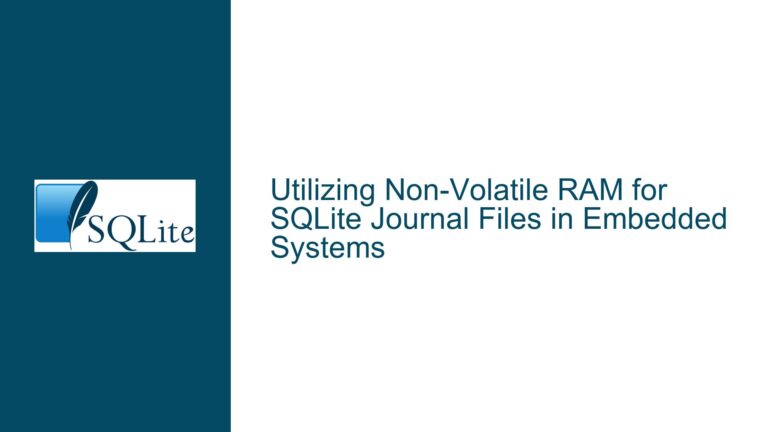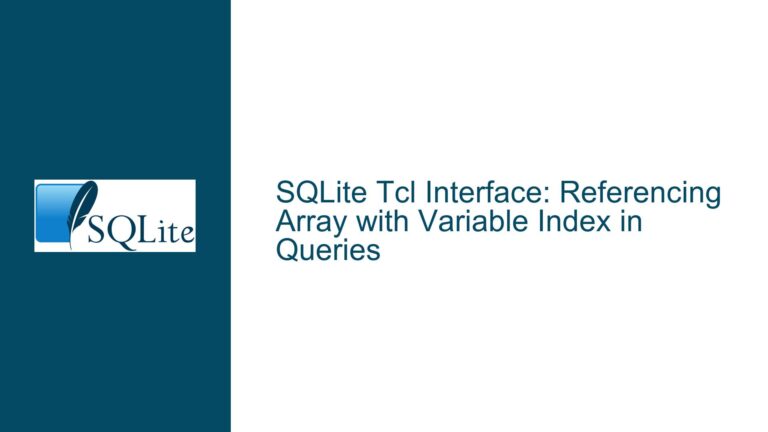SQLite .NET Wrapper Executes Multiple Statements via ExecuteReader, Raising SQL Injection Concerns
Batch Execution Behavior in SQLite .NET Wrapper and Security Implications
Issue Overview: Execution of Multiple SQL Statements via IDbCommand::ExecuteReader in System.Data.SQLite.dll
The core issue revolves around the behavior of the System.Data.SQLite.dll .NET wrapper when executing SQL commands that contain multiple statements separated by semicolons (e.g., SELECT * FROM Table1; DROP TABLE Table2;). Unlike the ODBC driver for Microsoft Access 97, which rejects such statements with an error ("Characters found after end of SQL statement"), the SQLite .NET wrapper executes all statements sequentially. This includes destructive operations like DROP TABLE, which can lead to unintended data loss if the application does not properly validate or restrict the SQL input.
The confusion arises from differing behaviors across database technologies:
- Microsoft Access ODBC Driver: Rejects multi-statement execution at the driver level. The ODBC wrapper treats semicolon-separated statements as invalid syntax, aborting execution.
- SQLite .NET Wrapper: Allows sequential execution of multiple statements in a single
IDbCommand::ExecuteReadercall. The first statement’s result set is returned to theIDataReader, while subsequent statements (e.g.,DROP TABLE) execute without immediate feedback to the caller. This behavior mirrors SQLite’s native support for batch execution but introduces risks if input is not sanitized.
The problem is exacerbated by two factors:
- Lack of Result Set Awareness: Applications iterating through
IDataReaderresults usingRead()without checkingNextResult()may inadvertently ignore subsequent result sets. However, non-query statements (e.g.,DROP TABLE) do not produce result sets, allowing them to execute silently. - SQL Injection Misconceptions: While the example given (
SELECT ...; DROP TABLE ...) is not a classic SQL injection (where untrusted input alters query logic), it highlights how allowing arbitrary SQL input can enable destructive operations. True SQL injection vulnerabilities arise when unsanitized user input is concatenated into SQL strings (e.g.,"SELECT * FROM Users WHERE Name = '" + userInput + "'"), enabling attackers to modify query logic.
Possible Causes: SQLite’s Batch Execution Support and .NET Wrapper Implementation
The behavior observed in the SQLite .NET wrapper stems from three interrelated causes:
1. SQLite’s Native Support for Batch Execution
SQLite’s C API allows multiple statements to be executed in a single call to sqlite3_exec(), which processes each statement sequentially. The .NET wrapper mirrors this capability. When ExecuteReader() is called with a CommandText containing semicolon-separated statements, the wrapper:
- Parses the input into individual statements.
- Executes each statement in order.
- Returns the result set of the first statement that produces output (e.g.,
SELECT). - Silently executes subsequent statements, even if they modify the database (e.g.,
DROP TABLE).
This is not a bug but a deliberate feature. Batch execution is useful for schema initialization scripts (e.g., CREATE TABLE ...; INSERT INTO ...;) or transactional operations.
2. IDbCommand Interface Ambiguity
The IDbCommand interface does not explicitly prohibit multi-statement execution. Its documentation states that CommandText represents “the text command to run against the data source,” without restricting this to single statements. Thus, the SQLite .NET wrapper’s behavior complies with the interface’s contract, even if it diverges from other providers (e.g., MS Access ODBC).
3. Input Validation Gaps
The example provided (SELECT * FROM Table1; DROP TABLE Table2) assumes the application constructs SQL commands using unsanitized input. While this is not a direct SQL injection (the input is not user-provided data embedded into a query), it illustrates a broader issue: allowing arbitrary SQL execution without vetting statements. If an application dynamically builds CommandText using external input (e.g., user-provided filters), attackers could inject malicious statements.
Troubleshooting Steps, Solutions & Fixes: Securing SQL Execution in the SQLite .NET Wrapper
1. Validate and Restrict SQL Input
- Whitelist Allowed Statements: If the application requires dynamic SQL generation (e.g., admin tools), restrict input to specific keywords (e.g.,
SELECT,UPDATE) and patterns. Use regular expressions to reject statements containingDROP,ALTER, orDELETE. - Avoid Dynamic SQL Construction: Prefer parameterized queries or ORM frameworks (e.g., Entity Framework) that abstract SQL generation. For example:
// UNSAFE: User input concatenated into SQL string sql = "SELECT * FROM Users WHERE Name = '" + userName + "'"; // SAFE: Parameterized query using (SQLiteCommand cmd = new SQLiteCommand("SELECT * FROM Users WHERE Name = @name", connection)) { cmd.Parameters.AddWithValue("@name", userName); using (SQLiteDataReader reader = cmd.ExecuteReader()) { // Process results } }
2. Handle Multiple Result Sets Correctly
When executing batches that include multiple SELECT statements, use NextResult() to iterate through all result sets:
using (IDataReader reader = command.ExecuteReader())
{
do
{
while (reader.Read())
{
// Process current row
}
} while (reader.NextResult());
}
For batches containing non-query statements (e.g., DROP TABLE), check the RecordsAffected property after each statement:
using (IDataReader reader = command.ExecuteReader())
{
int affected = reader.RecordsAffected; // Returns -1 for SELECT, ≥0 for INSERT/UPDATE/DELETE
while (reader.NextResult())
{
affected = reader.RecordsAffected;
}
}
3. Limit Database Permissions
Use SQLite’s PRAGMA commands to restrict write operations:
PRAGMA query_only = 1; -- Prevents all write operations
Or employ database-level encryption with read-only access for unprivileged users.
4. Audit SQL Execution with Tracing
The SQLite .NET wrapper supports tracing executed SQL statements via the SQLiteTrace event:
SQLiteConnection connection = new SQLiteConnection("Data Source=:memory:");
connection.Trace += (sender, e) =>
{
Console.WriteLine($"Executed SQL: {e.Statement}");
};
This allows real-time monitoring of all statements, including those executed after the first result set.
5. Use Database Schema Hardening
- Views Instead of Direct Table Access: Expose data through views that restrict access to sensitive columns or rows.
CREATE VIEW SafeTable1 AS SELECT id, non_sensitive_column FROM Table1; - Disable Dangerous Features: If the application does not require features like
ATTACH DATABASE, disable them at compile time using SQLite’s compile-time options.
6. Implement Transactional Boundaries
Wrap batches in explicit transactions to roll back changes if an error occurs:
using (SQLiteTransaction transaction = connection.BeginTransaction())
{
try
{
using (SQLiteCommand cmd = new SQLiteCommand("INSERT INTO Table1 ...; DELETE FROM Table2 ...", connection, transaction))
{
cmd.ExecuteNonQuery();
}
transaction.Commit();
}
catch
{
transaction.Rollback();
}
}
7. Upgrade to Latest System.Data.SQLite Versions
Later versions of the wrapper include security enhancements and improved tracing. For example, version 1.0.117.0 (bundled with SQLite 3.40.0) fixes edge cases in statement parsing.
Final Recommendations
- Never Trust Input: Even internal SQL input should be treated as potentially hostile.
- Prefer Parameterized Queries: Eliminate the risk of injection by avoiding string concatenation.
- Audit Existing Code: Use static analysis tools to identify unsafe
CommandTextassignments. - Educate Developers: Reinforce training on SQL injection and secure coding practices.
By adhering to these practices, the risk of unintended batch execution or SQL injection in SQLite .NET applications can be effectively mitigated.
